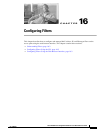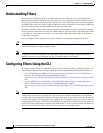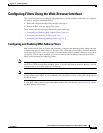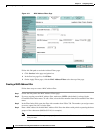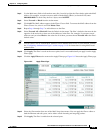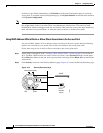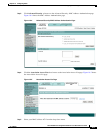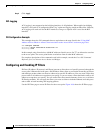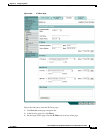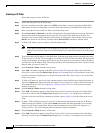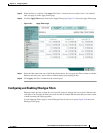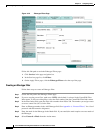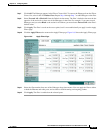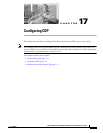
16-8
Cisco IOS Software Configuration Guide for Cisco Aironet Access Points
OL-11350-01
Chapter 16 Configuring Filters
Configuring Filters Using the Web-Browser Interface
Step 6 Click Apply.
ACL Logging
ACL logging is not supported on the bridging interfaces of AP platforms. When applied on bridging
interface, it will work as if configured without "log" option and logging would not take effect. However,
ACL logging will work well for the BVI interfaces as long as a separate ACL is used for the BVI
interface.
CLI Configuration Example
This example shows the CLI commands that are equivalent to the steps listed in the “Using MAC
Address ACLs to Block or Allow Client Association to the Access Point” section on page 16-6:
AP# configure terminal
AP(config)# dot11 association access-list 777
AP(config)# end
In this example, only client devices with MAC addresses listed in access list 777 are allowed to associate
to the access point. The access point blocks associations from all other MAC addresses.
For complete descriptions of the commands used in this example, consult the Cisco IOS Command
Reference for Cisco Aironet Access Points and Bridges.
Configuring and Enabling IP Filters
IP filters (IP address, IP protocol, and IP port) prevent or allow the use of specific protocols through the
access point’s Ethernet and radio ports, and IP address filters allow or prevent the forwarding of unicast
and multicast packets either sent from or addressed to specific IP addresses. You can create a filter that
passes traffic to all addresses except those you specify, or you can create a filter that blocks traffic to all
addresses except those you specify. You can create filters that contain elements of one, two, or all three
IP filtering methods. You can apply the filters you create to either or both the Ethernet and radio ports
and to either or both incoming and outgoing packets.
Use the IP Filters page to create IP filters for the access point. Figure 16-6 shows the IP Filters page.




